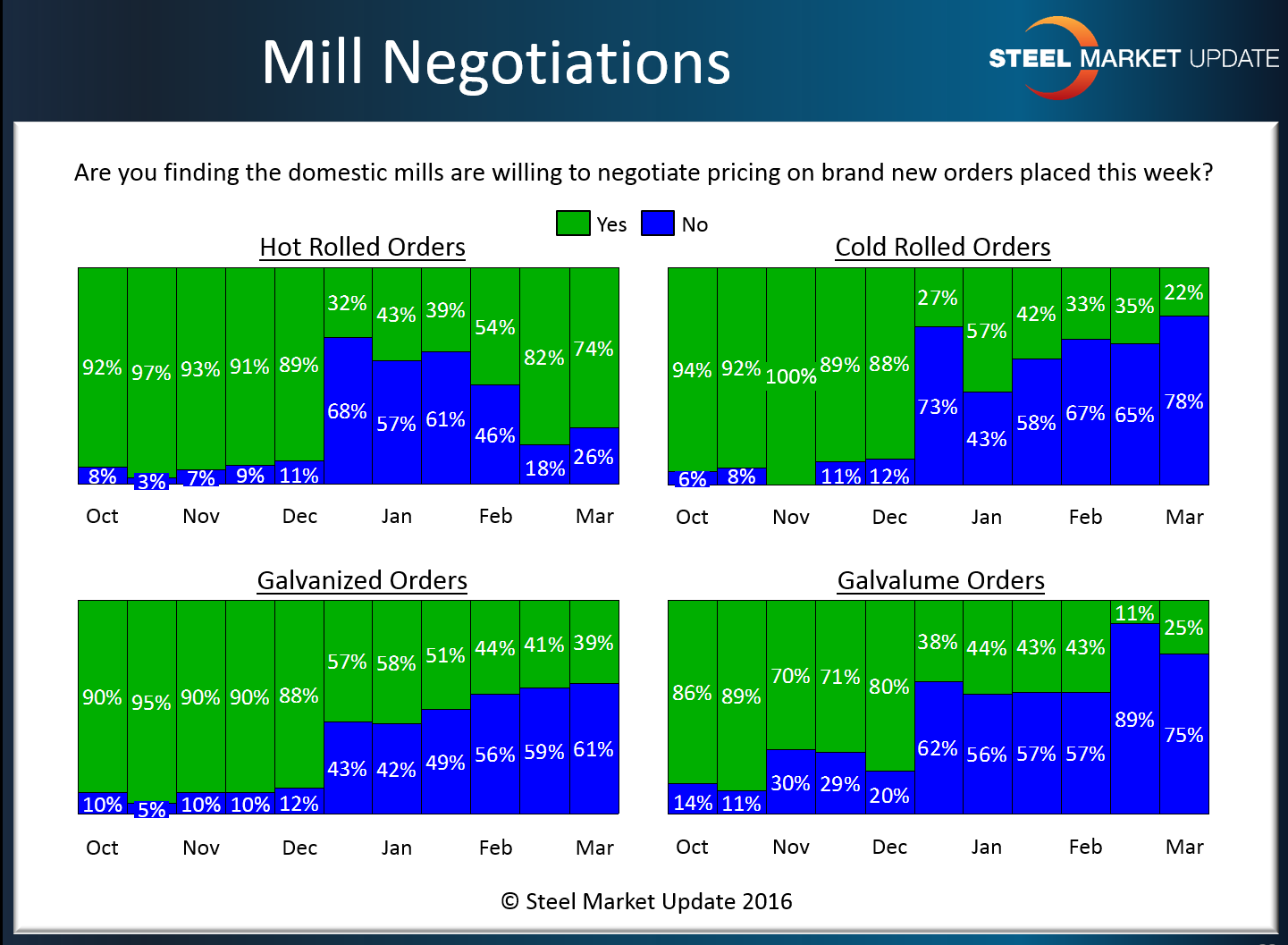SMU Data and Models

Steel Buyers Report Steel Mills as Less Willing to Negotiate Pricing
Written by John Packard
March 6, 2016
Buyers and sellers of flat rolled steel reported to Steel Market Update this past week that the domestic steel mills are less willing to negotiate steel prices. We believe this is due to strengthening order books, extending lead times, positive Sentiment and improving demand.
The only product not following the rest of the market is hot rolled steel which 74 percent of our respondents reported as the one product being considered negotiable when dealing with the steel mills. When looking back to the first week of January we had 43 percent of our respondents reporting HRC pricing as negotiable.
Cold rolled saw 22 percent of our respondents reporting the mills as willing to negotiate pricing. At the beginning of January, 57 percent reported the mills as willing to negotiate CRC pricing.
Galvanized dropped from 58% during the first week of January to 39 percent this past week.
Galvalume also dropped compared to the beginning of the New Year when we had 44 percent of our respondents reporting prices as negotiable. This past week that percentage dropped to 25 percent.
A side note: The data for both lead times and negotiations comes from only service center and manufacturer respondents. We do not include commentary from the steel mills, trading companies or toll processors in this particular group of questions.
To see an interactive history of our Steel Mill Negotiations data, visit our website here.

John Packard
Read more from John PackardLatest in SMU Data and Models

SMU Survey: Buyers’ Sentiment rebounds from multi-year low
Both of SMU’s Steel Buyers’ Sentiment Indices edged higher this week. Current Sentiment rebounded from a near five-year low, while Future Sentiment rose to a two-month high

SMU flat-rolled market survey results now available
SMU’s latest steel buyers market survey results are now available on our website to all premium members.

SMU Survey: Sheet lead times pull back after early-June blip, plate holds
Following the uptick seen two weeks ago, lead times eased this week for all four sheet products tracked by SMU, while plate lead times held steady, according to this week’s market survey.

SMU Survey: Pricing power abruptly shifts to steel buyers
The majority of steel buyers responding to our latest market survey say domestic mills are more willing to talk price on sheet and plate products than they were earlier this month. Sheet negotiation rates rebounded across the board compared to early June, while our plate negotiation rate hit a full 100%.

Service centers: Mill orders down marginally in May
SMU’s Mill Order Index (MOI) declined for a third straight month in May, but only marginally.

